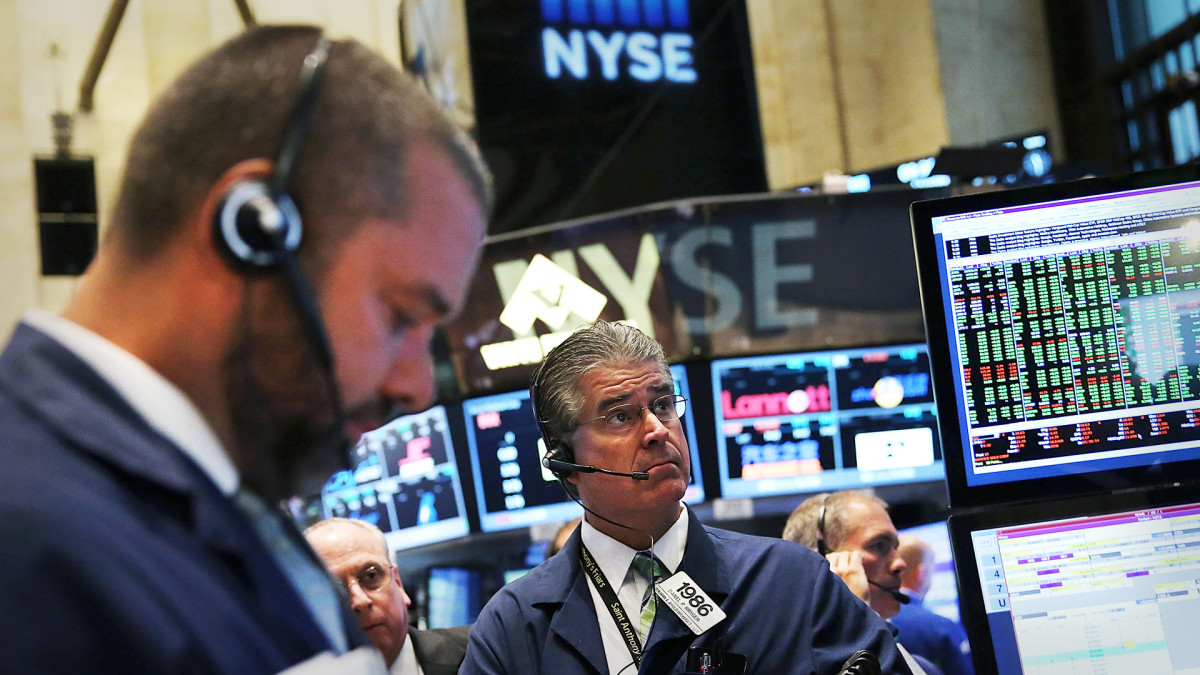
U.S. stocks moved firmly higher Thursday, while the dollar built gains against it global peers and Treasury yields steadied, as investors bet that softening core retail sales, as well as a signal that the European Central Bank has reached the end of its rate hike cycle, will echo with the Federal Reserve when it meets next week in Washington.
Stocks powered through the biggest month-on-month increase in inflation in more than a year Wednesday, with the Commerce Department reporting that CPI, boosted by a surge in gasoline prices, sped to 3.7% in August.
A modestly softer core reading, however, which came in at 4.3.% helped Treasury yields retreat, allowing stocks to book modest gains for the session and look to today's retail sales data for confirmation that gas prices are also likely to take a bite out of discretionary spending.
Headline retail sales rose 0.6% from July levels, to a collective total of $697.6 billion, the Commerce Department said, thanks in part to a big jump in gasoline prices that flatter the overall total.
That near 10% gain, which to the average price of a gallon to around $3.954, according to Energy Department data, took some steam out of discretionary spending in August.
Prior to the release of retail sales, however, investors also had to navigate the European Central Bank's September rate decision, which saw President Christine Lagarde hike rates for a 10th consecutive meeting while lowering growth and inflation forecasts.
The move likely signals the end of a global rate-hiking cycle that began with the Fed in early 2022 and triggered some of the most aggressive policy tightening in major world economies in decades.
European markets were notably firmer following the ECB rate decision, with the Stoxx 600 marked 1.6% higher by the close of trading in Frankfurt and the euro pegged at 1.0650 against the U.S. dollar.
Here in the U.S., Treasury bond yields, which have dictated the direction of trading for much of the past few weeks, where edging modestly higher with benchmark 10-year notes pegged at 4.299% and 2-year notes trading at 4.999%.
Oil prices bumped higher, as well, following reports from both OPEC and the International Energy Agency that cautioned on supply shortages over the coming months. Gains were partly offset, however, by data from the Energy Department showing domestic production rates near the record 13 million barrel per day levels recorded in 2020.
Brent crude contracts for November delivery, the global pricing benchmark, were $1.36 higher in early trading at $93.22 per barrel, while WTI crude for October was up $1.33 at $89.81 per barrel, after topping the $90 mark for the first time since November earlier in the session.
Heading into the afternoon of the trading day on Wall Street, investors were focused not only on the August retail sales figure but weekly jobless claims that rose modestly higher, to 220,000 over the period ending on September 9.
The S&P 500 was marked 36 points, or 0.81% higher while the Dow Jones Industrial Average gained 338 points, or 0.98%. The Nasdaq Composite was up 106 points, or 0.77%.
Markets were also watch the opening day performance of Arm Holdings, the U.K.-based chip designer which will debut on the Nasdaq after pricing its $5 billion IPO at the higher-end of its estimated range.
Arm's first trade was a $56.10 each before rising to as high as $61 each later in the session.
Chipmakers Nvidia (NVDA) -), Advanced Micro Devices (AMD) -) and Micron Technology (MU) -) were all marked higher heading into the Arm debut, with a first trade expected for the shares later in the session.







